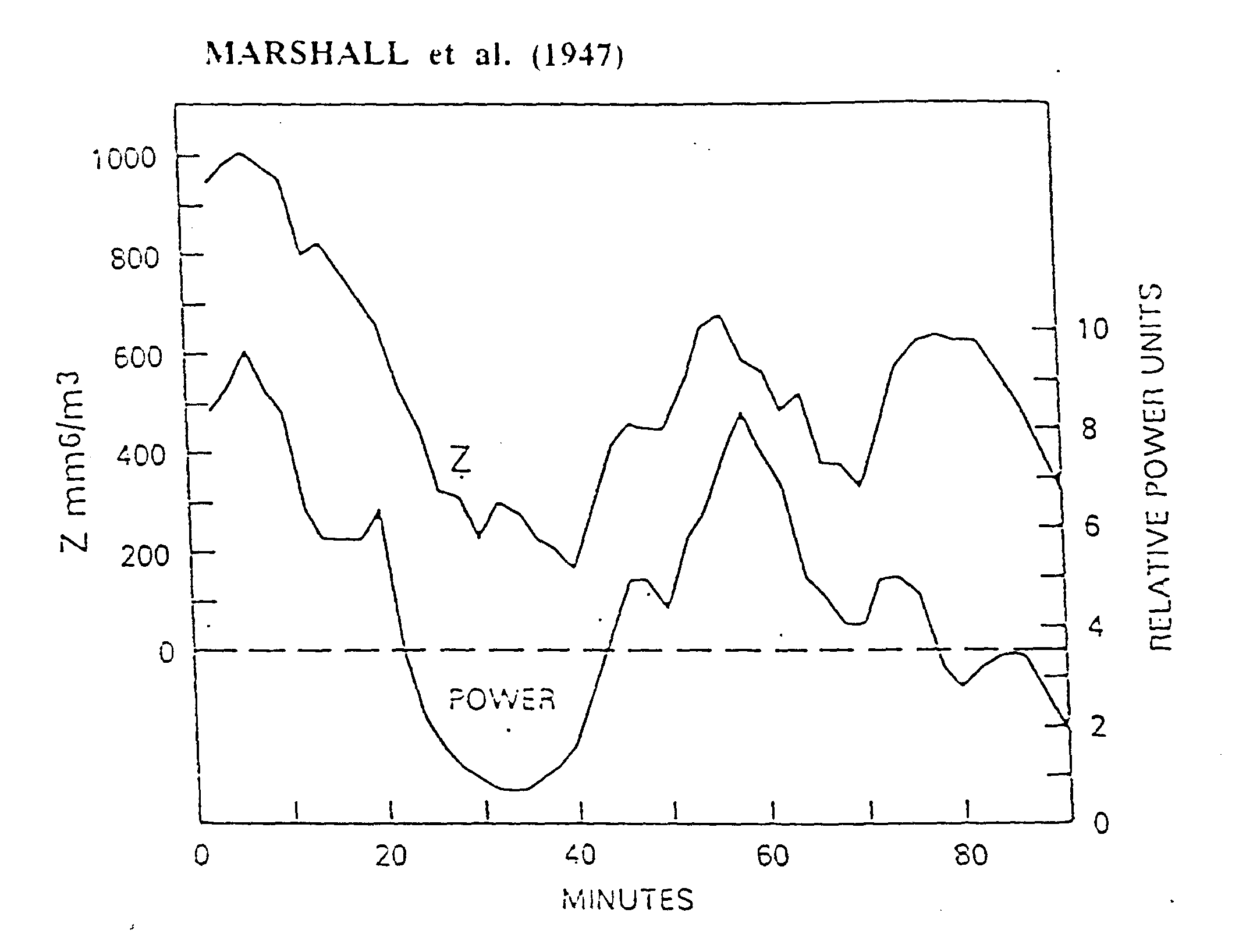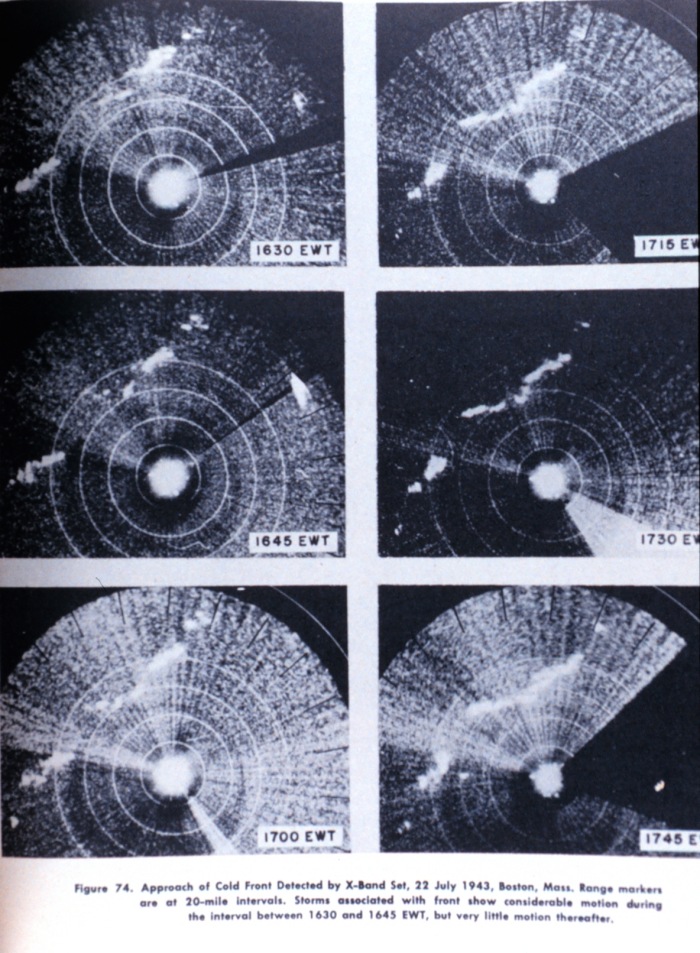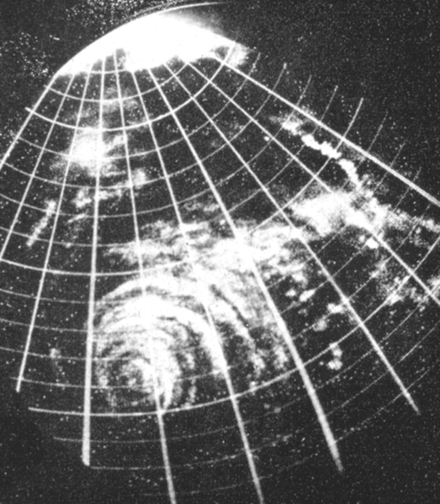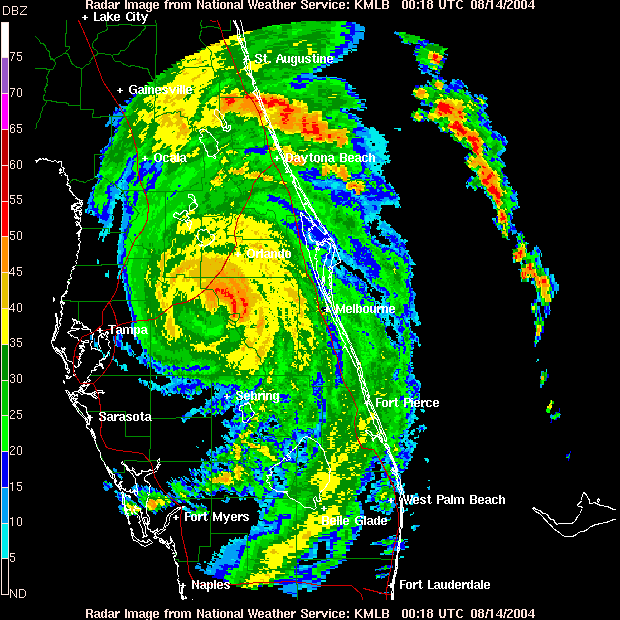
inspired other
researchers to work on development of weather radar and
relationships between precipitation and radar echoes.
Operational Radar Networks are Developed in U.S.
It appears that the first use of radar for systematic detection of weather systems occurred during WW II. In 1942 the U.S. Navy gave the U.S. Weather Bureau 25 surplus aircraft radars to be modified for ground meteorological use.
This figure shows early depictions of weather signatures in radar from 1943:

Approach of a cold front as observed on an X-Band radar set at Boston in July, 1943. This is perhaps the oldest preserved image of meteorological phenomena as observed by radar. In: "AAF Manual 105-101-2 Radar Storm Detection," by Headquarters, Army Air Forces, August 1945. Library Call Number M15:621.384 U58r.
Location: Boston, Massachusetts
Photo Date: 1943 July 22
This figure is from Orlando in 1948 showing echoes of a hurricane:

Operational Radar Networks are Developed in U.S.
It appears that the first use of radar for systematic detection of weather systems occurred during WW II. In 1942 the U.S. Navy gave the U.S. Weather Bureau 25 surplus aircraft radars to be modified for ground meteorological use.
This figure shows early depictions of weather signatures in radar from 1943:

Approach of a cold front as observed on an X-Band radar set at Boston in July, 1943. This is perhaps the oldest preserved image of meteorological phenomena as observed by radar. In: "AAF Manual 105-101-2 Radar Storm Detection," by Headquarters, Army Air Forces, August 1945. Library Call Number M15:621.384 U58r.
![]()
![]()
Location: Boston, Massachusetts
Photo Date: 1943 July 22
This figure is from Orlando in 1948 showing echoes of a hurricane:

Photograph of the radar scope at Orlando, Florida in 1948. This was the third time that a hurricane had passed sufficiently close to a radar site to have its structure revealed. In: "Weatherwise," Volume 1, No. 4, August 1948, p. 79.
Credits - NOAA Photo Library
